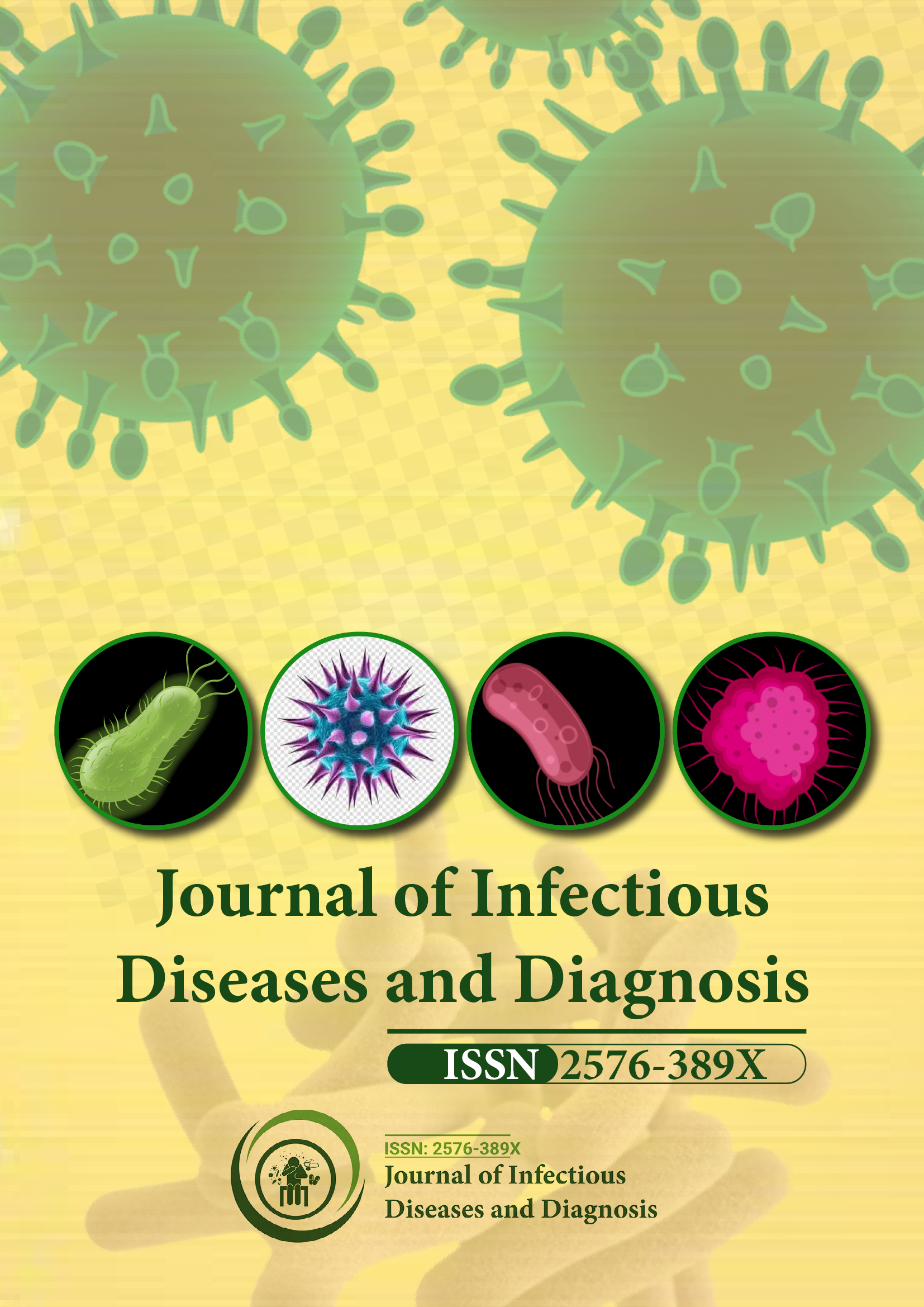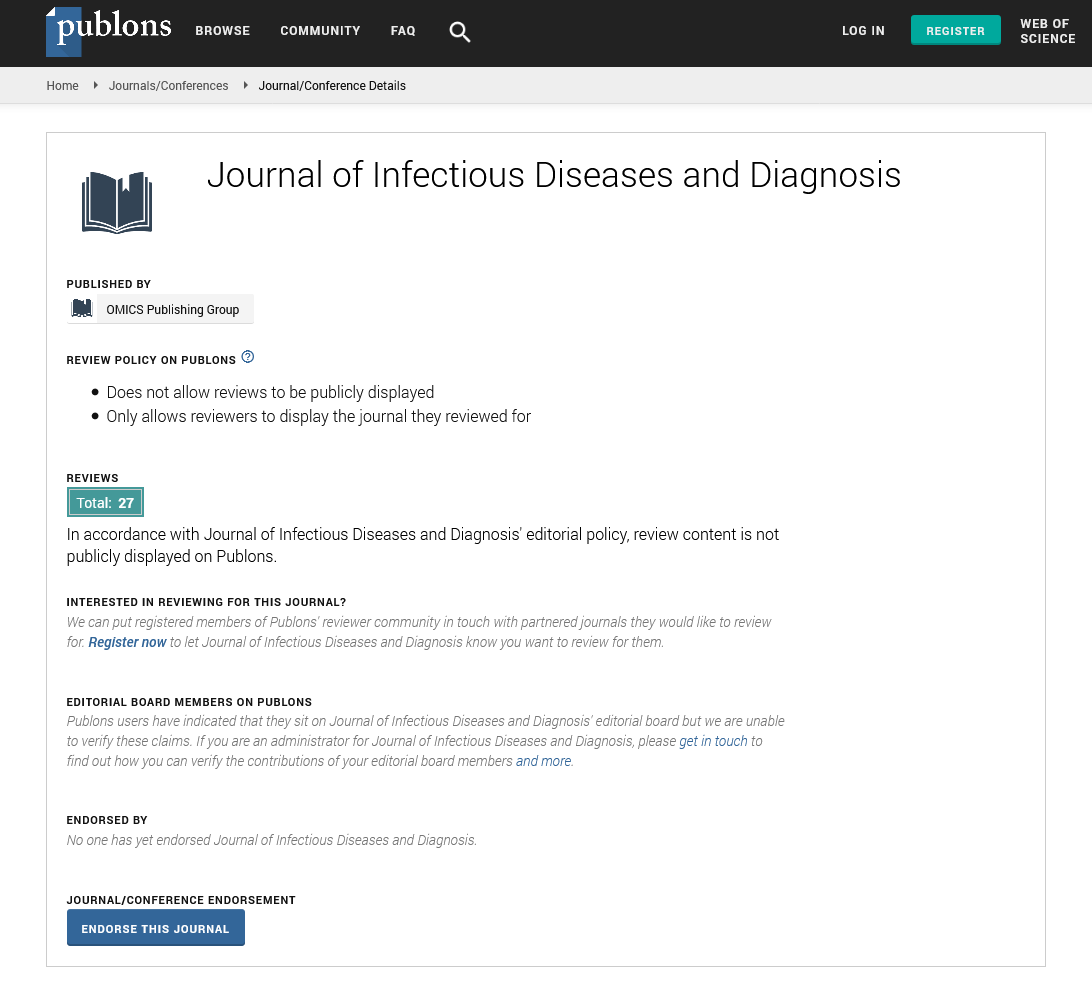Indexed In
- RefSeek
- Hamdard University
- EBSCO A-Z
- Publons
- Euro Pub
- Google Scholar
Useful Links
Share This Page
Journal Flyer

Open Access Journals
- Agri and Aquaculture
- Biochemistry
- Bioinformatics & Systems Biology
- Business & Management
- Chemistry
- Clinical Sciences
- Engineering
- Food & Nutrition
- General Science
- Genetics & Molecular Biology
- Immunology & Microbiology
- Medical Sciences
- Neuroscience & Psychology
- Nursing & Health Care
- Pharmaceutical Sciences
Perspective - (2025) Volume 10, Issue 3
Seroprevalence and Risk Factors of Dengue and Chikungunya Co-Infection in Urban Slum Populations
David Paul*Received: 30-Apr-2025, Manuscript No. JIDD-25-29296; Editor assigned: 02-May-2025, Pre QC No. JIDD-25-29296 (PQ); Reviewed: 16-May-2025, QC No. JIDD-25-29296; Revised: 23-May-2025, Manuscript No. JIDD-25-29296 (R); Published: 30-May-2025, DOI: 10.35248/2576-389X.25.10.331
Description
Urban slums, with their dense populations, poor sanitation and limited access to healthcare, present ideal conditions for the spread of vector-borne diseases such as dengue and chikungunya. Both diseases are transmitted by Aedes mosquitoes and often exhibit overlapping clinical symptoms, making diagnosis and management complex. Recent outbreaks have indicated that co-infection with dengue and chikungunya is not uncommon, particularly in areas where both viruses circulate. However, there remains a gap in understanding the true burden of such co-infections and the social and environmental factors that may contribute to their spread in high-risk populations. This study aimed to determine the seroprevalence of dengue and chikungunya co-infection and identify associated risk factors among residents of urban slum communities.
The cross-sectional study was conducted in four densely populated slum areas located in three metropolitan cities. These sites were selected based on prior reports of arboviral outbreaks and high vector density. A total of 1,200 individuals aged 5 years and older were randomly selected using a cluster sampling method. After obtaining informed consent, participants were interviewed using a structured questionnaire covering demographic information, housing conditions, history of fever, mosquito exposure and healthcare access. Blood samples were collected and tested for IgM and IgG antibodies against dengue and chikungunya viruses using ELISA kits approved for surveillance purposes.
The results showed that 27.6% of participants had serological evidence of past dengue infection, 19.4% had markers of chikungunya exposure and 9.3% were positive for both. Coinfection was more common in adults aged 25 to 44 years and in households with more than five residents. The highest rates were seen in areas with stagnant water sources near dwellings, lack of covered water storage and poor waste disposal practices. Households located within 100 meters of uncovered drains or uncollected garbage heaps showed significantly higher seropositivity.
A clear correlation was noted between co-infection rates and selfreported mosquito exposure. Participants who reported being bitten as nets or repellents were more likely to test positive. Additionally, those with previous episodes of prolonged fever lasting more than five days in the past year were more likely to show markers of coinfection, although laboratory confirmation was not available at the time of illness. The presence of symptoms such as joint pain, rash and fatigue was frequently recalled, but due to overlapping clinical signs, many cases had gone undiagnosed or were misattributed to seasonal viral fevers.
Socioeconomic status played a significant role. Families with monthly incomes below the poverty line, poor housing conditions such as tin or plastic roofing and lack of indoor plumbing were disproportionately affected. Many households lacked access to municipal water supplies and relied on stored water in open containers, which served as breeding grounds for Aedes mosquitoes. The absence of regular pest control or municipal sanitation services further contributed to vector proliferation.
The study also explored healthcare-seeking behavior. Despite experiencing symptoms, over 40% of participants did not seek medical care or visited informal providers due to cost concerns or long wait times at government facilities. Among those who sought care, very few were tested specifically for dengue or chikungunya unless symptoms were severe. This gap in access to accurate diagnostics likely contributed to the underrecognition of coinfection in past outbreaks.
The analysis identified several independent risk factors for coinfection, including residing in flood-prone areas, sharing water containers among households and lack of mosquito prevention knowledge. Educational campaigns in these communities had been sporadic and not widely retained. Among participants, only 18% correctly identified both dengue and chikungunya as mosquitoborne diseases and even fewer could name effective prevention strategies.
Seroprevalence was also influenced by the seasonal timing of sample collection. Data collected during the post-monsoon period revealed the highest co-infection rates, consistent with peak mosquito breeding seasons. Although some individuals had antibody evidence of prior exposure, it was not possible to determine the exact timing or sequence of infections. Co-infections may occur simultaneously or sequentially within a short interval and this distinction has implications for clinical outcomes, which were not explored in depth in this study.
One important observation was that individuals with co-infection had reported more severe and prolonged symptoms during previous febrile illnesses. While clinical records were not available to confirm complications, this suggests that co-infections may increase symptom burden and warrants further investigation into their clinical impact. The lack of effective vector control and absence of vaccine coverage in these communities further elevates the public health concern.
In conclusion, this study demonstrates a notable seroprevalence of dengue and chikungunya co-infection in urban slum populations, with nearly one in ten individuals showing evidence of dual exposure. The findings highlight the influence of environmental conditions, socioeconomic factors and limited access to preventive measures on infection risk. Co-infection is particularly concerning in areas where both viruses circulate widely and where healthcare infrastructure does not support early diagnosis or appropriate care. Addressing these challenges will require a combination of improved vector control, health education, infrastructure development and accessible diagnostic services. Public health programs must prioritize slum areas in outbreak preparedness and response plans, as these communities bear a disproportionate burden of disease and are least equipped to manage the consequences. Strengthening surveillance and integrating routine serological assessments can support timely interventions and reduce the risk of undetected coinfection clusters in vulnerable populations.
Citation: Paul D (2025). Seroprevalence and Risk Factors of Dengue and Chikungunya Co-Infection in Urban Slum Populations. J Infect Dis Diagn. 10:331.
Copyright: © 2025 Paul D. This is an open-access article distributed under the terms of the Creative Commons Attribution License, which permits unrestricted use, distribution, and reproduction in any medium, provided the original author and source are credited.

